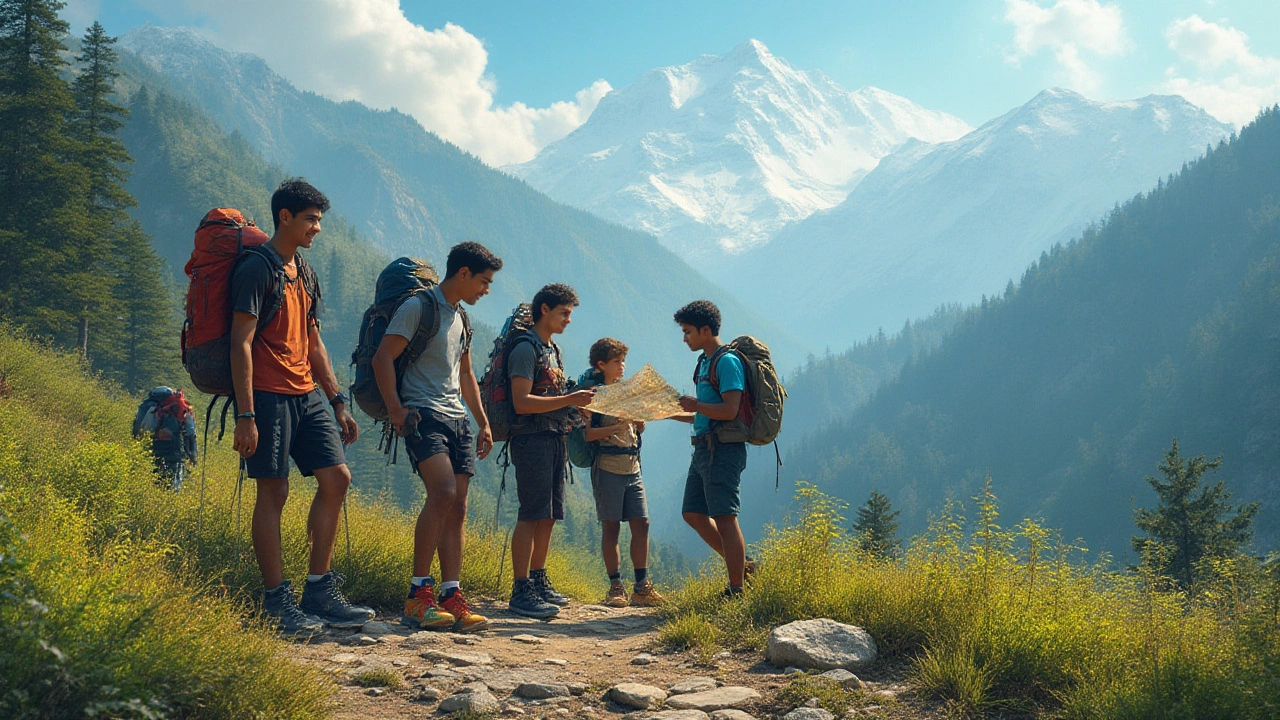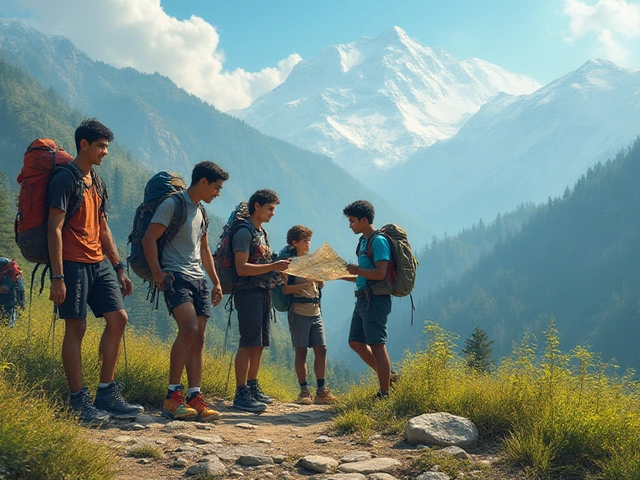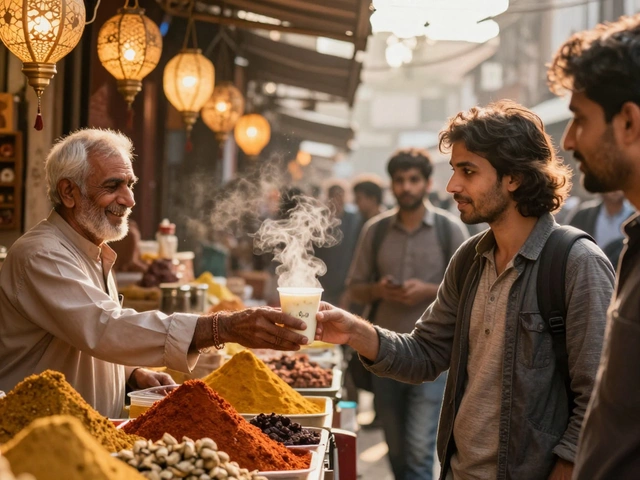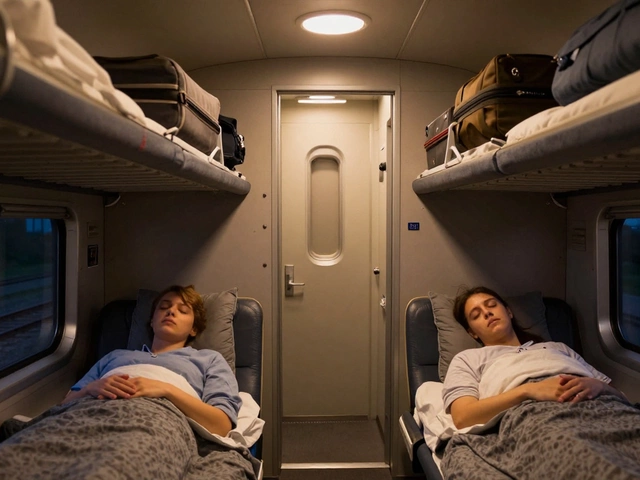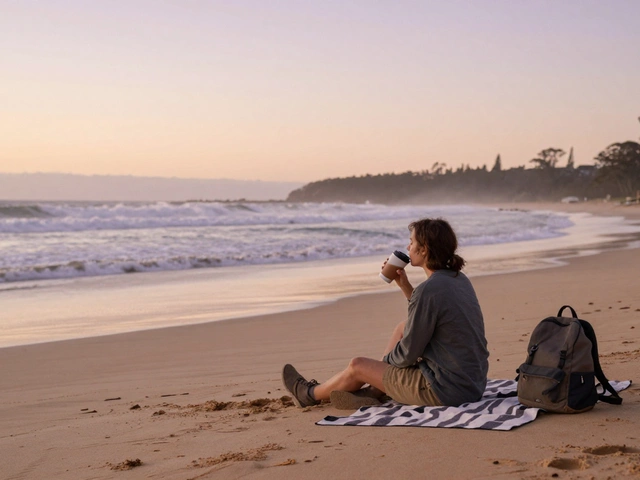When you picture yourself out in nature, do you see green hills rolling out below, sunlight filtering through the trees, and your boots crunching on packed earth? Maybe you just call it ‘going for a walk in the woods.’ But if you're planning a trip, searching up gear, or swapping stories with fellow travelers, one question keeps popping up: what’s the real difference between trekking and hiking? Some folks use these words like they’re twins, but step a little closer, and you’ll spot a whole set of details that split them apart. Turns out, your answer matters — especially if you show up with the wrong shoes or underestimate just how far that trail stretches into the wild.
How Hiking and Trekking Actually Compare
First thing: both activities get you out from behind a desk and into nature’s wild playground. But while hiking usually means a walk along a clear, marked trail that lasts from a few hours to a day, trekking is like hiking’s tougher, more demanding sibling. A hike is basically a brisk walk along forest tracks, rolling hills, or gentle paths. Most official hiking routes, whether in Western Ghats, Himachal ridges, or trails near Brisbane like Springbrook or Lamington, are well-marked, often looped, with trail signs or colored blazes at every twist. Hiking is accessible — you slip on some good shoes, fill your bottle, toss a sandwich in a daypack, and off you go.
Trekking, however, involves more than just a sturdy pair of sneakers. Treks are usually multi-day journeys across challenging terrains — think high-altitude paths in Ladakh, vast Himalayan circuits, or deep jungle routes in Northeast India. There’s unpredictability. You're often away from civilization, carrying your entire world in a backpack, camping under stars, and making your way without the comfort of signboards every 200 meters. Some treks go well above 3,000 or even 5,000 meters. No quick phone call for help here — it’s just you, your group, and the landscape unraveling in front of you.
So, why do they get mixed up? In everyday chat, the definitions blur. Depending where you grow up, “hiking” might cover both easy and hard trails, while “trekking” rings epic or remote. In India, the two terms can sometimes be used for everything from a short forest climb to a week in the Himalayas. But purists and guides (and maybe your insurance company) see a real line: hiking is short to moderate, with decent paths and easy rescue, while trekking is strenuous, often remote, and needs more prep.
There’s a culture around both, too. Himalayan and Sahyadri trek veterans swap stories about snowstorms and leeches — it’s not the same as a gentle Saturday hike near Kodaikanal lake. In places like Nepal or Uttarakhand, multi-day treks bring villages, mountain passes, changing weather, and a deep sense of journey. That adventure spirit is pretty different from setting out on a day-hike with just a sandwich and a camera.
Gear Up: What You Actually Need for Each Adventure
The difference between hike and trek becomes crystal clear when you start packing your bag. Hikers can usually get by with sneakers or trail shoes, a water bottle, some snacks, a hat, and a basic first-aid kit. Look at the trail description: If the whole trip is under six hours, there’s no camping, and you’ll always get mobile signal or see other walkers, you’re probably hiking. Popular trails like the Valley of Flowers, Tiger’s Nest in Bhutan, or Queensland’s coastal walks are ideal for this setup.
But trekking? That’s a whole different dance. Your packing list is longer — and heavier. You’ll need tough, waterproof boots with ankle support, thick socks, weatherproof layers (a rain poncho or jacket is vital even in Indian monsoons), a sleeping bag, tent or arrangements to sleep in local teahouses, plus enough food for several days if you’re off-grid. Water purification tablets or a filter, a sturdy knife, lightweight stove, and a detailed map or GPS device move out of the ‘optional’ zone. Don't forget headlamps, extra batteries, sunscreen, and, if you’re hitting altitude, high-calorie snacks and possibly medication for altitude sickness.
One tip that saves a ton of heartache: never skimp on your boots. Bad shoes can ruin a trek fast—think lost toenails, blisters, or a sprained ankle hours from the nearest road. Test your gear at home, break in your boots, and get used to the weight of your pack. Reliable waterproof clothing is life-saving once the mountain weather turns or a sudden Western Ghat thunderstorm erupts. For bigger treks like Chadar (the frozen Zanskar river) or Stok Kangri, you might even need crampons, gaiters, and insulated jackets.
Insurance is a game-changer, especially around India’s hilly regions. Many trekking organizers (especially in Ladakh or Himachal) now demand that trekkers have decent travel insurance, including cover for high-altitude rescue. Not so necessary for a half-day hike along Goa’s coastline — but for the wilds of Uttarakhand or Sikkim, it’s a must. Check that your policy covers every activity you’re planning — not all do.
Packing light is key, but don’t go minimal at the expense of safety. On my last trek to Sandakphu, I learned the hard way that extra batteries, a knee brace, and a couple of salty snacks can turn a tough day into a manageable one. Listen to your body, trust reliable gear brands, and use packing cubes to keep your things dry and organized in the drizzle. If you’re not sure about what to take, ask a seasoned trekker or check out gear lists from reputable Himalayan institutes like NIM (Nehru Institute of Mountaineering).
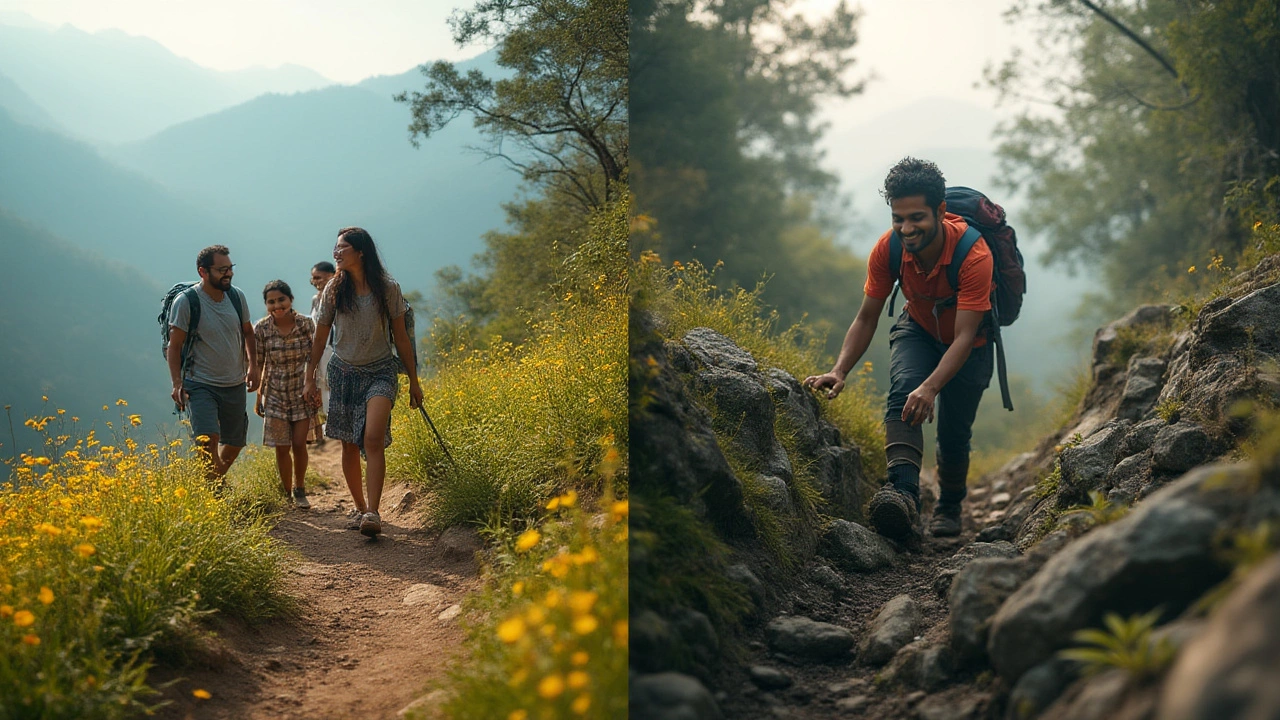
Physical and Mental Challenges: What to Actually Expect
A casual hike might feel like an energizing stroll, a good way to clear your head after a week of sitting at your desk. You’ll work your legs and get your heart rate up, but there’s little risk of real exhaustion or danger. Depending on the trail, you can adjust your pace, take plenty of photos, and even call it quits halfway without too much drama. Hikes are perfect for beginners, families, or anyone wanting to dip a toe into nature without a crash course in survival skills. Iconic Indian hikes like Rajmachi Fort, Nandi Hills, or even the slopes around Ooty draw thousands each season because they balance effort and reward without pushing you to your limits.
Trekking, though, pushes both body and mind. You’ll face steep climbs, river crossings, and changing landscapes that test endurance. Altitude adds a whole new set of hurdles, from breathlessness above 3,000 meters to headaches, nausea, and unpredictable weather. Isolation sets in — you can’t just turn back when the first blister appears. Success often relies on teamwork, mental grit, and the ability to adapt. If you’re trekking for a week or more, every morning you wake up outside, sometimes cold, sweaty, or sore, but the sense of accomplishment hits you with every step forward and every new view opening up.
One fascinating fact: the world’s highest trekking pass, Thorong La in Nepal, sits at 5,416 meters. That’s about 17,769 feet — higher than anywhere in Australia or most places outside Asia and South America! For that kind of trek, you need proper acclimatization, pacing, and sometimes even daily health checkups at rest points. In India, places like Rupin Pass (4,650 meters) or Kedarkantha (3,800 meters) expose you to similar high-altitude challenges, though the trek profile and conditions vary wildly.
Mental preparation matters. On a trek, you could spend entire days walking in silence, facing rain, heat, or wind, conversations turning to raw honesty or drifting into long stretches of nothing but your own thoughts. Some folks find this meditative; others find it tough. There are moments when exhaustion makes you question your sanity for signing up, only to find the day’s worries vanishing at sunset as mist rolls over mossy hills.
It helps to set micro-goals: just get to that boulder, reach the next ridge, sip some water and breathe. Celebrate tiny victories. If you ever stumble onto a social media forum for trekkers, you’ll see stories about how hardships on the trail spilled over into real life, making everyday obstacles back home seem a little smaller. Hiking refreshes your mind; trekking often rewires it completely.
Where to Go: Choosing Your First Trail or Trek
This is where dreams meet reality — where photos of wildflower meadows and snow-capped peaks collide with your actual fitness, time off work, and what kind of adventure lights your fire. For most beginners, local hiking trails offer a safe, fun taste of the outdoors. Good examples abound around India and Australia: Maharashtra’s Kalsubai, Matheran’s quiet paths, or the lush rainforest tracks around New South Wales and Queensland (think Glass House Mountains or Mount Coot-tha here near Brisbane). Just bring water, sturdy shoes, and a sense of curiosity.
Got some trail miles under your belt already? Then look at accessible Indian treks like Triund in Himachal, Sandakphu in West Bengal, or Nag Tibba in Uttarakhand. These adventures usually take 2–4 days, with village stays or simple shelters along the route, and don’t need technical skills. The Indian trekking circuit is wild about these: they’re still a real challenge but don’t need advanced gear or expensive guides. In Nepal, try something introductory like Ghorepani–Poon Hill — a few days, jaw-dropping Himalayan sunrises, epic hospitality.
Once you’re hooked, the world opens up: explore the Valley of Flowers, Roopkund (famous for its mysterious skeleton lake), or go for a spiritual trek to Kedarnath. Experienced trekkers set sights on tougher routes like Pin Parvati Pass, Stok Kangri, or the frozen Chadar Trek mentioned earlier. For those craving wild jungles, the Western Ghats and Northeast India deliver — try Kudremukh, Tadiandamol, or Dzükou Valley for a maze of cloud forests, leeches, and thunderous waterfalls.
Safety always comes first. Whether you’re hiking or trekking, let someone know your plan, stick to marked paths when possible, and sign up with a reputable group if the route is unfamiliar. Hundreds of lost hikers and trekkers are rescued every season because they underestimated what looked like a ‘simple’ trail. Download digital maps, take a power bank, and carry old-school paper backups in case your phone gets soggy.
Not sure what to choose? Ask yourself: Do you want to get back for dinner and a hot shower, or are you happy swapping comfort for the thrill of tiny tent life and days that stretch into uncharted hills? The answer guides your packing, your prep, and your whole outlook on your next escape into the wild. Whether you’re clocking up quick kilometers or embarking on a multi-day adventure, nature finds a way to reward every level of effort.
If you take one thing from all this, it’s that trekking vs hiking isn’t just about distance or scenery. It’s about the mindset, your planning, and how far you’re willing to go out of your comfort zone. So, next time someone brings up that old debate, toss them a grin and ask: Are you planning a stroll or an odyssey? Either way, the wild is waiting — pack smart, walk tall, and soak it up, step by step.
